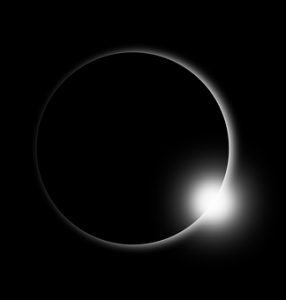Aug
14

Posted by Carolyn Martin on August 14th, 2017
Posted in: Health Literacy
 Everyone is gearing up for the big solar eclipse happening August 21. Many libraries have been gathering information as well as planning activities and programs for their communities. Why the hoopla?! Well, last time the United States experienced a total solar eclipse was in 1991 in Hawaii. And it was in 1979 that the contiguous United States saw a total solar eclipse. Then it went through the Pacific Northwest, including Idaho, Montana, Oregon, and Washington state. The next total solar eclipse will be by-passing this region and instead be going from Texas through the Midwest to Maine in 2024.
Everyone is gearing up for the big solar eclipse happening August 21. Many libraries have been gathering information as well as planning activities and programs for their communities. Why the hoopla?! Well, last time the United States experienced a total solar eclipse was in 1991 in Hawaii. And it was in 1979 that the contiguous United States saw a total solar eclipse. Then it went through the Pacific Northwest, including Idaho, Montana, Oregon, and Washington state. The next total solar eclipse will be by-passing this region and instead be going from Texas through the Midwest to Maine in 2024.
A total solar eclipse is an exciting opportunity that doesn’t occur very often and not always in this country. It can be easy to forget that safety is important when it comes to this natural phenomenon. Good thing that the National Library of Medicine (NLM), the National Institutes of Health (NIH), and other authoritative organizations provide safety information to protect not only our eyes but protect our skin.
The National Eye Institute emphasizes the importance of using the correct solar glasses. Make sure the solar eclipse glasses you’re using have a solar filter which meet an international standard as indicated by ISO 12312-2 certification. And make sure that they are not damaged nor older than 3 years. NASA has more information about how to safely view the eclipse including how to use pin hole projections. The American Academy of Ophthalmology provides an infographic to provide quick information about do’s and don’ts to keep eyes safe during this event.
Also, we tend to forget that we’re out in the sun, during this event, which can cause sunburn so make sure to apply sunblock and limit the time in the sun. MedlinePlus provides comprehensive information about sun exposure.
For emergency healthcare planners and providers, NLM’s Disaster Information Management Research Center (DIMRC) provides a link to a 17-page document from TRACIE (Technical Resources, Assistance Center, Information Exchange). This document can help emergency healthcare planners and providers prepare for and address response concerns related to the solar eclipse. It provides fact sheets, checklists, locally-developed guidance documents, and news articles on eye safety, injury treatment, and planned mass gatherings in rural and urban areas.
And just to know more about the eclipse, the Federal Depository Library Program (FDLP) Academy has a recently recorded webinar.
Enjoy this rare occurrence but do it safely!